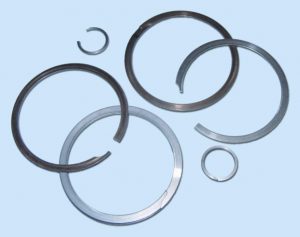
Retaining rings are commonly used in housing components. Like other types of fastener-based rings, they are designed to hold multiple parts together. Retaining rings, however, aren’t permanent. Rather, they are typically only used when initially building a housing assembly, after which they are removed. To learn more about retaining rings and how they work, keep reading.
Overview of Retaining Rings
A retaining ring is a type of temporary fastener — typically consisting of a spiral, semi-circular piece of metal — that’s designed to hold the parts of a housing assembly together. Housing assemblies consist of a smooth cylindrical piece of metal. With their smooth surface, it’s often difficult to install components inside of them. This is where retaining rings come into play. Retaining rings are ring-like fasteners that provide a shoulder or rim within a housing assembly, which can be used to temporarily hold the housing assembly’s components together.
While all retaining rings are used to hold the components within a housing assembly together, there are several types of them. Here are some of the most common types of retaining rings:
- Tapered retaining rings
- Axially assembled retaining rings
- Radially assembled retaining rings
- Self-locking retaining rings
- Snap retaining rings
- Spiral retaining rings
- Push-on retaining rings
How Retaining Rings Work
Most retaining rings are made of a strong metal. Some of them are made of carbon steel, whereas others are made of stainless steel or even copper. They are also available in different finishes. A finish is a protective coating that’s applied over the metal from which a retaining ring is made. With a coating, retaining rings are better protected against corrosion. The protective coating shields the metal so that it’s not directly exposed to moisture, which could otherwise cause it to corrode.
Regardless, all retaining rings work in a similar way. They are used in conjunction with a housing assembly to retain other components. Housing assemblies have a smooth surface. As a result, components may not attach to them — at least not without the assistance of a retaining ring. A retaining ring can be installed with a housing assembly to provide a shoulder or rim for these components.
In Conclusion
Retaining rings aren’t ordinary fasteners. Unlike general-purpose screws and bolts, they are designed specifically for housing assemblies. Retaining rings are spiral pieces of metal that create a shoulder or rim for a housing assembly’s components.
